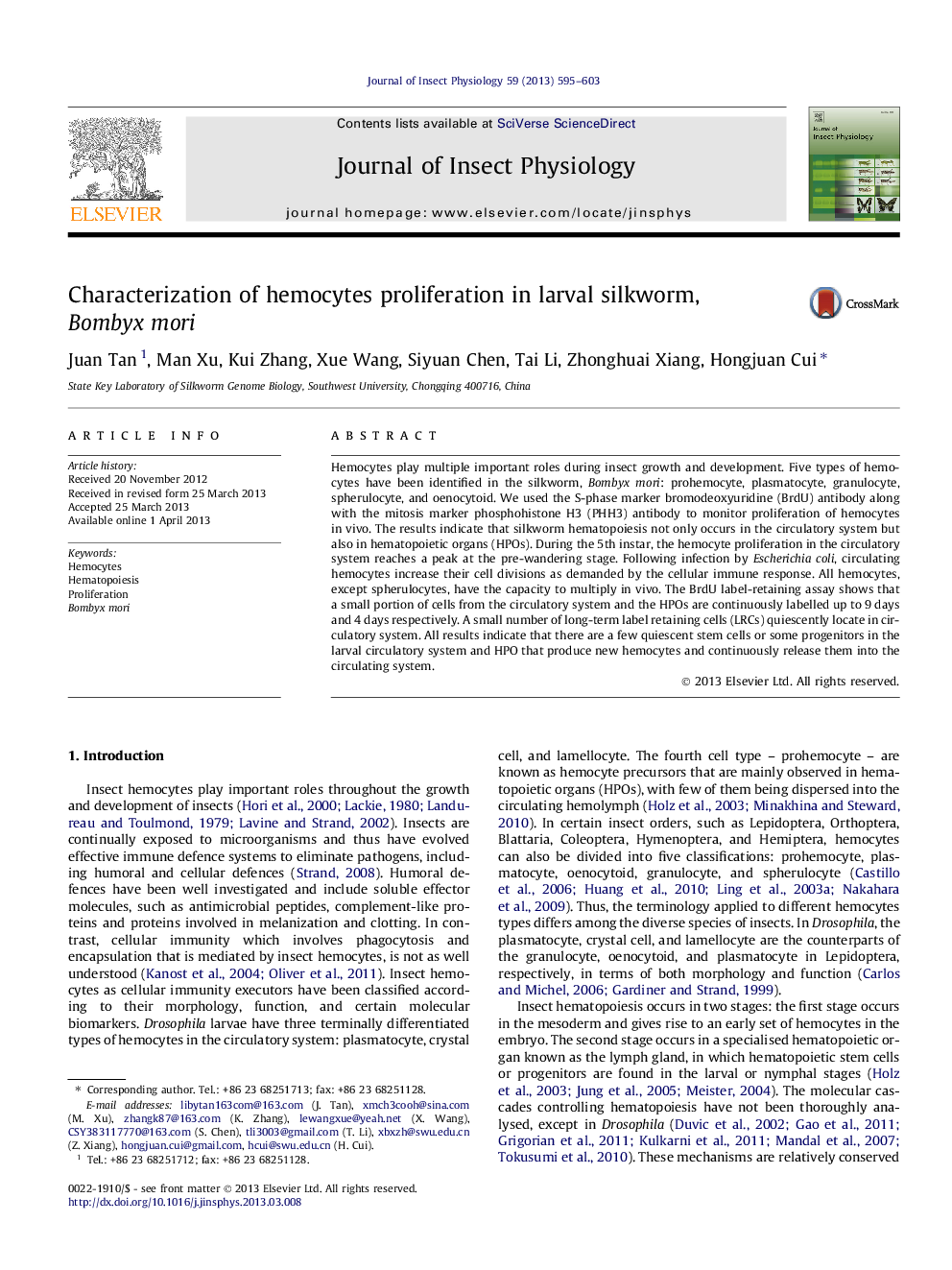| Article ID | Journal | Published Year | Pages | File Type |
|---|---|---|---|---|
| 2840566 | Journal of Insect Physiology | 2013 | 9 Pages |
•The proliferation of silkworm haemocytes was investigated by molecular markers.•In response to the Escherichia coli’s infection, the circulating hemocytes could increase the ratio of cell divisions.•Potential hematopoietic stem cells of larval silkworm were found in vivo.•The hemocytes of hematopoietic organs could migrate out and proliferate in vitro.
Hemocytes play multiple important roles during insect growth and development. Five types of hemocytes have been identified in the silkworm, Bombyx mori: prohemocyte, plasmatocyte, granulocyte, spherulocyte, and oenocytoid. We used the S-phase marker bromodeoxyuridine (BrdU) antibody along with the mitosis marker phosphohistone H3 (PHH3) antibody to monitor proliferation of hemocytes in vivo. The results indicate that silkworm hematopoiesis not only occurs in the circulatory system but also in hematopoietic organs (HPOs). During the 5th instar, the hemocyte proliferation in the circulatory system reaches a peak at the pre-wandering stage. Following infection by Escherichia coli, circulating hemocytes increase their cell divisions as demanded by the cellular immune response. All hemocytes, except spherulocytes, have the capacity to multiply in vivo. The BrdU label-retaining assay shows that a small portion of cells from the circulatory system and the HPOs are continuously labelled up to 9 days and 4 days respectively. A small number of long-term label retaining cells (LRCs) quiescently locate in circulatory system. All results indicate that there are a few quiescent stem cells or some progenitors in the larval circulatory system and HPO that produce new hemocytes and continuously release them into the circulating system.
Graphical abstractFigure optionsDownload full-size imageDownload as PowerPoint slide
